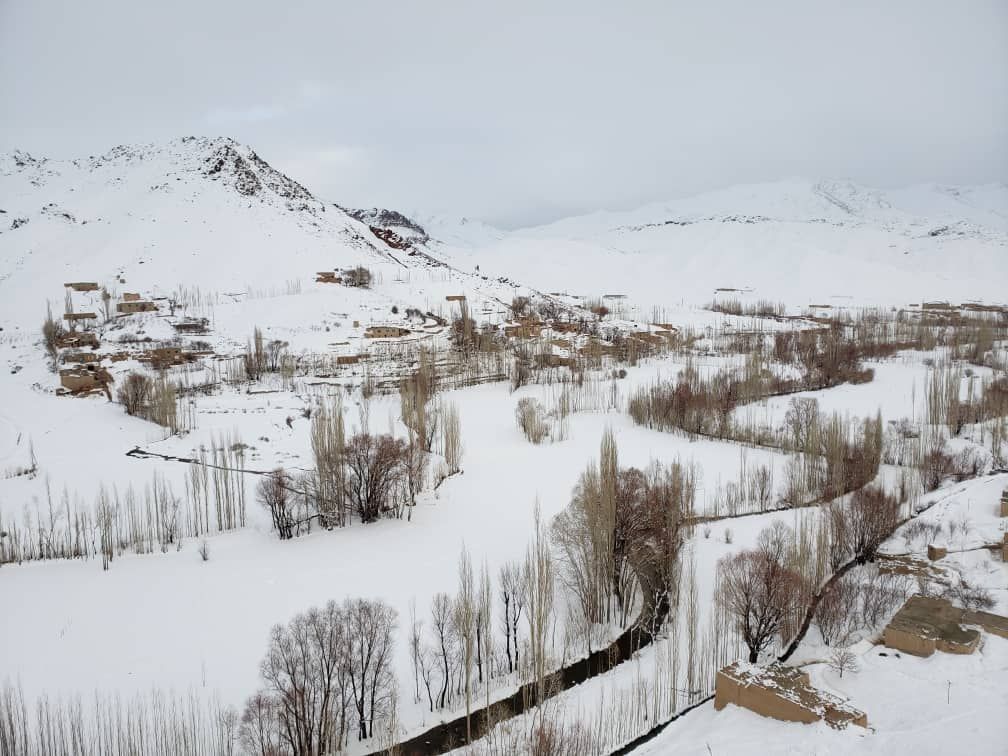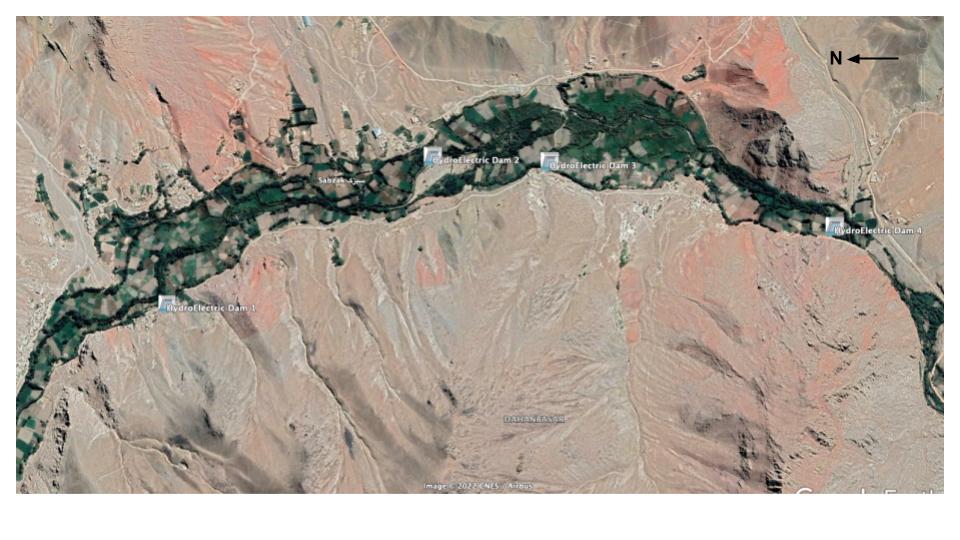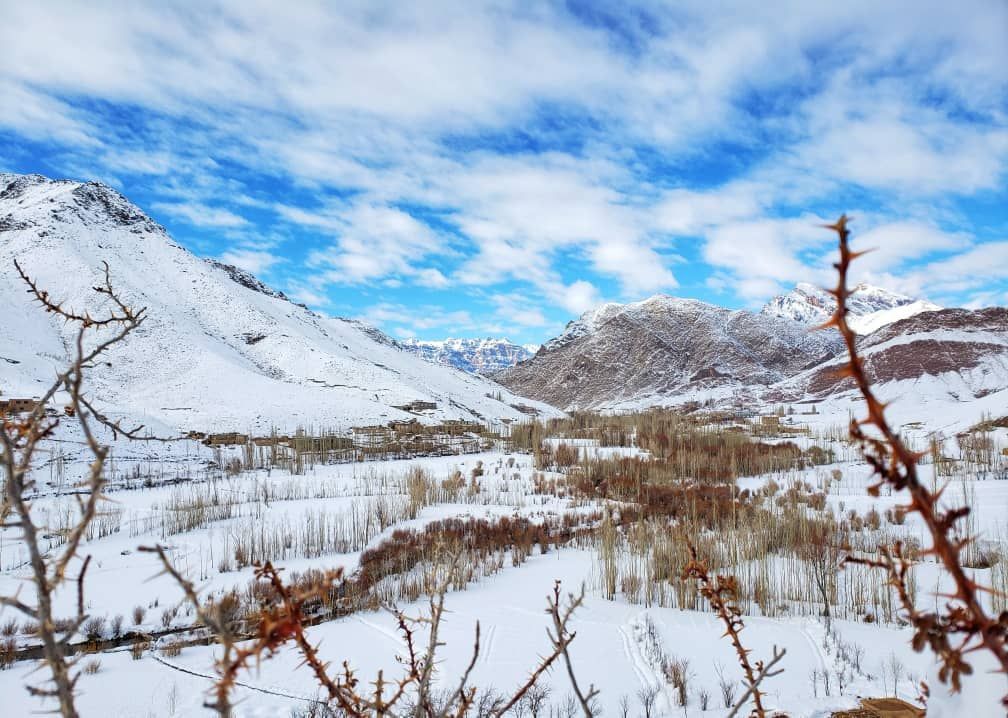114 Families Receive Sustainable Electricity for 18,000 Dollars
Resident of a village in Afghanistan's southeastern Ghazni province built 4 dams 16 years ago to power their village as hopes for government provided electricity in the far reaching regions dwindled.

Reporting by Hamid Arman, written by Mirzahussain Sadid, edited by Mohammad J. Alizada and Brian J. Conley
SABZAK, GHAZNI–Afghanistan is a landlocked country with a dry atmosphere. Over the past several years drought has greatly reduced agricultural production, which is the main source of income for much of the country’s rural population.
Most of Afghanistan does not have the capacity to build dams to conserve water due to a lack of resources, but despite this, Afghans across the country use water as best possible they can, including irrigation, and in some villages they have constructed hydroelectric dams to keep homes lit with electricity.
Although a lack of resources from the state might have stopped some, others have spent their own money to improve their daily lives to the best of their abilities. One example is the village of Sabzak in the Malistan district of southeastern Ghazni province.
Home to 114 families, Sabzak is about 270 kilometers southwest of Kabul. It takes between 10 to 11 hours of travel time from Afghanistan’s capital because more than half of the road is not paved.
The people of Sabzak have built 4 dams on their waterways in order to produce enough electricity for their homes over the past 16 years. The villagers worked together to solve their issue as a group, making the village independent of the government in at least one aspect.
Sabzak was the third village after Shinday, the district capital, and Lalchak to build the hydro electric dams in the district.
The residents of Sabzak have long believed that the government, no matter who was ruling Afghanistan, did not have the ability to provide electricity for every province, especially far reaching villages such as this. Because of this, they built small hydroelectric dams to light their homes, watch TV, heat water, and wash and iron clothes.

The “Bom-e Sabzak” dam is one of 4 dams, it produces the highest amount of electricity at 20 kilowatts, enough to provide electricity for 60 homes. This dam, the first in the village, was built around 16 years ago. The dams produce electricity and drive mills that make flour.
The dam was built with very basic tools such as shovels and picks, the turbines were bought in Ghazni while other necessary tools, like the waterpipe feeding the turbine, and the regulator were built according to the schematics the villagers gave to local blacksmiths. All four dams were built for around 900,000 Afghanis (about $18,000 at the time), which were collected from families living in the village. Building the dams cost about 18,000 Afghanis ($360 at the time) per home.
“One of the challenges during building the dams were the rocks that were in the way of the streams, we had to hire someone with expertise in blowing those big rocks up,” Mr. Haqshinas told Alive in Afghanistan.
Abuzar Rafayi, another resident, said almost 500 rocks were blown up to make way for the streams to flow properly into the dams.
Building all four dams took about a year, with labor and tools provided by the villagers for free.
According to Mohammad Ali, the monthly electric bill for each household is around 300 to 500 Afghanis, equating to an average household usage of 60 to 100 kilowatts per month.
Although the construction of the dams was financed by the villagers, they still pay 5 Afghanis per kilowatt used each month to cover necessary maintenance. The electricity is turned on between dusk and 8 am in the morning.
Residents say after the first dam was built, and electricity was turned on, they bought different colored light bulbs, affixed them on their roofs and would get up on the roof after dusk to watch the village be lit up in an array of different colored lights.
The main dam in the village is run by Khalifa Juma who is in his sixties. He understands the mechanics of electricity better and also keeps watch of the dam. The electricity is only provided for the villagers from dusk to 8 am in the morning.
The villagers in turn pay Khalifa Juma 50 Afghanis per home, totalling 3,000 Afghanis ($30 currently) per month. Khalifa Juma is the head of a family of 14.
“Each household would pay around 3,000 Afghanis per month in electric bills, we made plans to build the dams, shared it with the villagers and it was a unanimous decision,” Khalifa Juma said.
According to Khalifa Juma, the idea was to reduce the amount of money people had to pay for electricity using generators that burned fuel.
“When we brought Khalifa Wahid, a man who was involved in building the first dam in Malistan, to look at the places we had chosen for building the dams, he didn’t accept one of the spots we had chosen,” Khalifa Juma said adding that another spot on a man’s private land was selected by Khalifa Wahid and was donated to the dam after negotiations.
The men say that people are very happy now.
“The fact that every villager can afford the bill is very convenient,” Mr. Rafayi said, adding that the drought only affected the dams briefly during last summer but the operations resumed quickly.
Editor’s Note:
Alive in Afghanistan initially wanted to do a story about the hometowns of each of our correspondents, this the first story in a series about our correspondents’ hometowns.
Our correspondent Mirzahussain Sadid and Managing Editor Mohammad J. Alizada’s mother originates from Sabzak.

